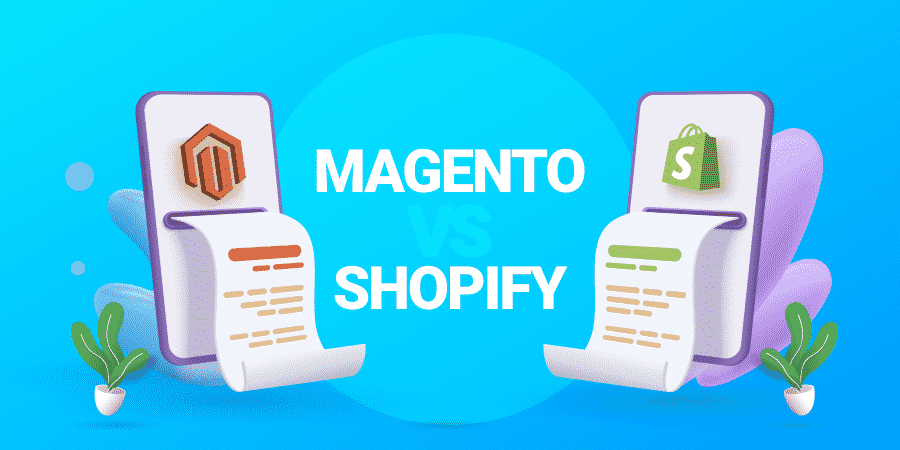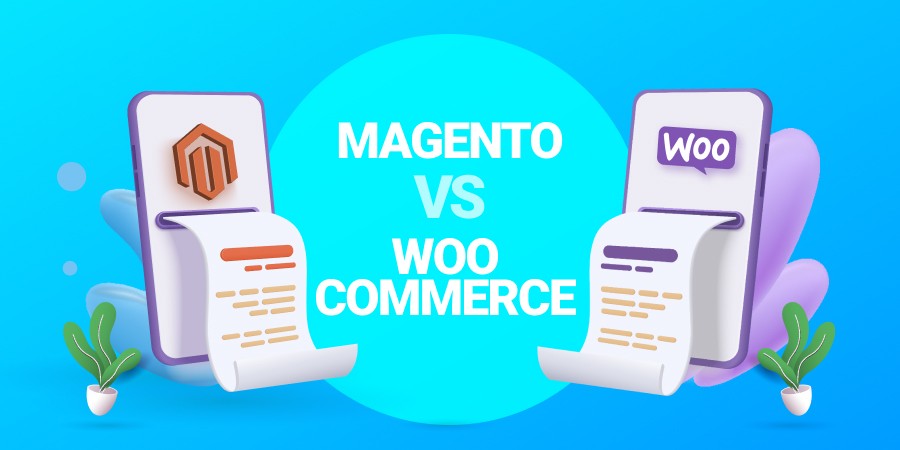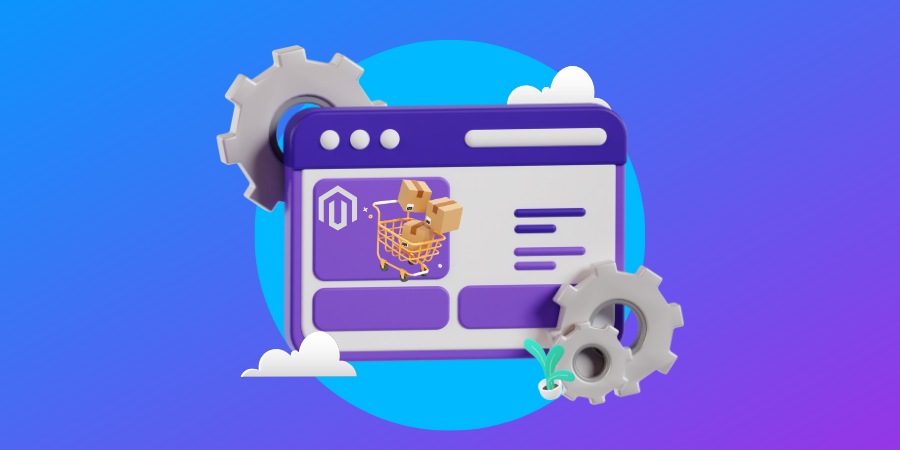More than 250,000 eCommerce websites across the globe run on Magento.
With the growing trend of store owners choosing Magento, more and more businesses are looking for ways to ensure their eCommerce stores remain competitive in the market.
Custom Magento themes can help you achieve just that.
We’ll cover everything you need to know about creating and using custom Magento themes, including the benefits, best practices, and working with a Magento theme development agency.
[ez-toc]
Digital Silk builds custom Magento websites. Request a quote
What Are Custom Magento Themes?
A custom Magento theme is one that has been designed and developed specifically for your online store, based on your unique business needs, brand identity, and user experience goals.
In contrast, purchased themes are readily available on various theme marketplace stores, and although they can be customized, they are not unique to a specific store.
A custom Magento theme provides more design flexibility, customization options, and long-term cost savings compared to a purchased theme.
However, a purchased theme can be a good option if you’re on a tight budget and need to set up your store quickly, but a purchased theme can also cause long-term problems as it has a lot of code that is hard to double-check.
7 Steps For Creating Custom Magento Themes
While it may seem time-consuming and require expert developers to complete, the process of creating a custom Magento theme can be broken down into more manageable sections.
These 7 steps provide a basic framework for creating a custom Magento theme from scratch:
1. Create A Directory For Your Theme
The first step in creating a custom Magento theme is to create a directory. This directory is a file structure that will contain all the files and assets needed for your custom theme.
The directory should be named according to the vendor and theme name and should be located in the app/design/frontend directory of your Magento installation.
For example, if your vendor name is “Acme” and your theme name is “MyTheme”, you would create a directory called Acme/MyTheme in the app/design/frontend directory.
This directory should contain subdirectories for web, templates, layout, and etc, which will be used to store your theme’s assets, templates, layout files, and other configuration files.
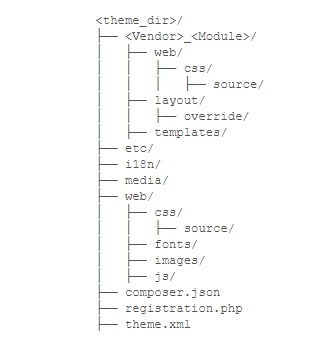
2. Declare Your Theme In The Directory
Once you’ve created a directory for your custom theme, the next step is to declare it in the directory by adding a theme.xml file.
This file will contain information about your theme, such as its name, parent theme (if any), and other relevant information.
It’s important to note that the theme.xml file should be placed in the root directory of your theme.
3. Convert Your Theme Into A Composer Package
The next step is to convert your custom theme into a Composer package. This will allow you to easily manage your theme’s dependencies and make it easier to distribute and install.
To do this, you’ll need to create a composer.json file in the root directory of your theme.

[Source: Magento]
4. Register Your Custom Theme By Adding A Registration.php File
After converting your theme into a Composer package, the next step is to register your custom theme by adding a Registration.php file.
This file will register your theme with Magento and tell it where to find your theme’s files. The Registration.php file should be located in the app/code/[Vendor]/[Theme]/ directory.

[Source: devdocs.magento]
5. Apply & Configure Your Custom Theme In The Magento Admin
Once you’ve registered your custom theme with Magento, you can apply and configure it in the Magento Admin.
To do this, go to Content > Design > Configuration and click on the Edit button next to the store view you want to apply your theme to.
From there, you can select your custom theme from the Applied Theme dropdown menu.
6. Use LESS To Make Changes To Your Theme’s Styles
LESS is a popular CSS preprocessor that can be used to make changes to your theme’s styles. It allows you to use variables, mixins, and other advanced CSS features to make your styling more efficient and reusable.
To use LESS in your custom Magento theme, you’ll need to create a custom.less file in the app/design/frontend/[Vendor]/[Theme]/web/css/source/ directory and include it in your theme’s default_head_blocks.xml file
7. Incorporate Basic Layout Elements Into Your Custom Theme
The final step in creating a custom Magento theme is to incorporate basic layout elements into your theme.
This includes things like the header, footer, and other common elements that appear on every page of your site.
To do this, you’ll need to create templates for these elements and include them in your theme’s default.xml file.
Our experts can help. Schedule A Consultation
Custom Magento Themes vs. Theme Marketplace [Pros & Cons]
When deciding between using a custom Magento theme or buying a template from a theme marketplace, the influential factors are usually a business’ needs, budget and timeline.
To understand which choice is best for your business, you need to first know what a theme marketplace is.
A theme marketplace is an online library of pre-designed themes that can be implemented into websites, including eCommerce sites built on platforms such as Magento, Shopify and WooCommerce.
Here are some pros and cons for both custom Magento themes and theme marketplaces:
Custom Magento Themes
Pros:
- Ease of use: Custom themes have the opportunity to add new features and options that make it easy for store owners to customize and manage their stores.
- Functionality: Custom themes can be tailored to the specific needs of the store, including custom features and integrations that may not be available in pre-made themes.
- Performance: Custom themes are optimized for the store’s specific needs, resulting in faster page load times and improved user experience.
- Flexibility: Custom themes can be updated and modified as the store evolves and grows.
Cons:
- Higher cost: Custom themes require more time and resources to develop, resulting in a higher upfront cost.
- Longer development time: Custom themes can take longer to develop than pre-made themes, which may delay the launch of the store.
Theme Marketplaces
Pros:
- Lower cost: Purchased themes are generally less expensive than custom themes, making them more accessible for smaller stores with limited budgets.
- Faster development time: Purchased themes can be installed and customized more quickly than custom themes, resulting in a faster store launch.
Cons:
- Limited design: Purchased themes are used by multiple stores, which can make it difficult to create a unique brand identity and stand out from competitors.
- Limited functionality: Purchased themes may not include all the features and functionality required by the store, which can limit the store’s growth and scalability.
- Limited support: Purchased themes often have limited support options, which can be a challenge if the store encounters technical issues or requires customization beyond the theme’s capabilities.
5 Ways Custom Magento Themes Can Transform Your Business
As shown above, using custom Magento themes can have overarching benefits for businesses and eCommerce web development projects.
But what are some of the direct impacts custom themes can have on eCommerce businesses?
1. Improve Branding With A Unique Design
Custom designing for Magento can result in a unique and branded look that stands out from competitors.
With a custom theme, you have complete control over the look and feel of your store and can tailor it to match your brand’s personality and values.
For example, imagine you have a fashion e-commerce store that sells trendy clothing items for young adults. You want to create a custom Magento theme that reflects your brand’s unique style and appeals to your target audience.
To achieve this, you could work with a professional branding agency to create a custom homepage layout that showcases your brand elements such as colors, fonts and imagery.
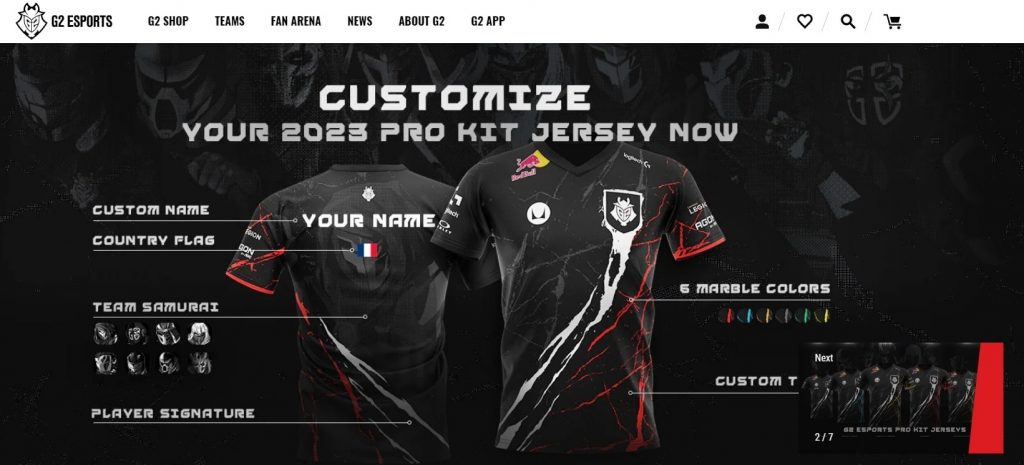
[Source: G2 eSports]
2. Enhance UX & UI Experience
Custom Magento themes are designed with the user experience (UX) and user interface (UI) in mind.
By creating a custom theme, you can ensure that your store is easy to navigate and provides a seamless shopping experience for your customers.
For example, a custom theme can be designed with responsive design principles, meaning it adjusts to different screen sizes and devices.
This is important for mobile users, who make up an increasing percentage of online shoppers.
3. Improve Website Performance
Custom themes are often optimized for performance, which means that they load faster and provide a smoother browsing experience for users.
This can lead to improved search engine rankings, higher conversion rates, and increased customer satisfaction.
4. Integrate Third-Party Tools
Custom Magento themes are compatible with third-party extensions and plugins, allowing you to add additional features and functionality to your store as needed.
Some third-party integrations that are most common are:
- Payment Gateways: A custom Magento theme can be designed to integrate with various payment gateways such as PayPal, Stripe, or Authorize.net to allow customers to easily make purchases on your site.
- Shipping Providers: Custom Magento themes can be designed to integrate with popular shipping providers like FedEx or UPS to provide customers with accurate shipping rates and tracking information.
- Analytics and Reporting Tools: Custom Magento themes can be designed to integrate with analytics and reporting tools like Google Analytics or Kissmetrics to provide insights on website traffic, sales, and customer behavior.
- Social Media Integration: A custom Magento theme can be designed to integrate with social media platforms like Twitter or Instagram to allow customers to share products, leave reviews, and connect with your brand on social media.
This ensures that your store can grow and adapt to changing business needs over time.
5. Improve Search Engine Optimization
Custom Magento themes can be optimized for search engines, which means that they can help improve your store’s visibility in search
They are usually built with clean, optimized code that is easier for search engine crawlers to read and index. This can improve your website’s search engine rankings and visibility.
Speak with our experts. Set Up A Consultation
Best Practices For Customizing Your Magento Theme Design
By following these best practices, you can ensure that your custom Magento theme design is well-optimized, consistent, and functional for your users.
1. Carefully Choose Color Schemes & Typography
Choosing the right color scheme and typography is important to ensure your custom Magento theme matches your brand’s identity.
In fact, research has shown that colors alone are responsible for 60% of user’s acceptance of a certain product.
Use colors that complement your brand logo and typography that is easy to read and fits with your brand’s style.
2. Follow Key Responsive Theme Guidelines
Responsive design is a must-have for any website today, and your custom Magento theme should be no exception. Ensure that your theme is optimized for all devices, including mobile phones and tablets.
Use responsive design best practices, such as using fluid grids, flexible images, and media queries, to ensure your website looks great on all devices.
Studies show that 75% of mobile users are more likely to leave a website that isn’t optimized for mobile, so it’s essential to follow responsive design guidelines.
3. Customize Elements Of Your Magento Theme
Customizing the header, footer, and other elements of your Magento theme can help you create a unique and personalized user experience.
Consider adding custom navigation menus, social media icons, or a search bar to the header. In the footer, you might add links to important pages, contact information, or copyright information.
Customizing these elements can help you create a theme that is tailored to your business needs and provides a better user experience for your customers.
4. Test & Debug Your Custom Magento Theme
Once you have created your custom Magento theme, it’s important to test it thoroughly to ensure it functions correctly and is bug-free. Test your theme on multiple devices and browsers to ensure it works as intended.
You can use Magento’s built-in developer tools, such as the Magento Profiler and the Magento Debugger, to help you identify and fix any issues.
Testing and debugging your theme can help you avoid potential problems and ensure a smooth user experience for your customers.
Working With A Magento Theme Development Agency
Creating a custom Magento theme can be a daunting task, especially if you don’t have the technical expertise required.
However, working with a Magento theme development agency can help you create a custom theme that meets your brand’s unique requirements.
At Digital Silk, our Magento developers are on hand to guide you through the process and deliver a custom Magento theme that will elevate your digital presence.’
Besides Magento theme development, we offer various services for Magento projects, which include:
- Magento development
- Magento migration
- Magento maintenance and support:
- SEO optimization:
- Mobile optimization
- Magento Payment Gateway integration
- Analytics and reporting
Get in touch and contact us so we can provide a custom theme for your business. We’re ready to take full ownership of your Magento project and provide the results you need.
"*" indicates required fields



